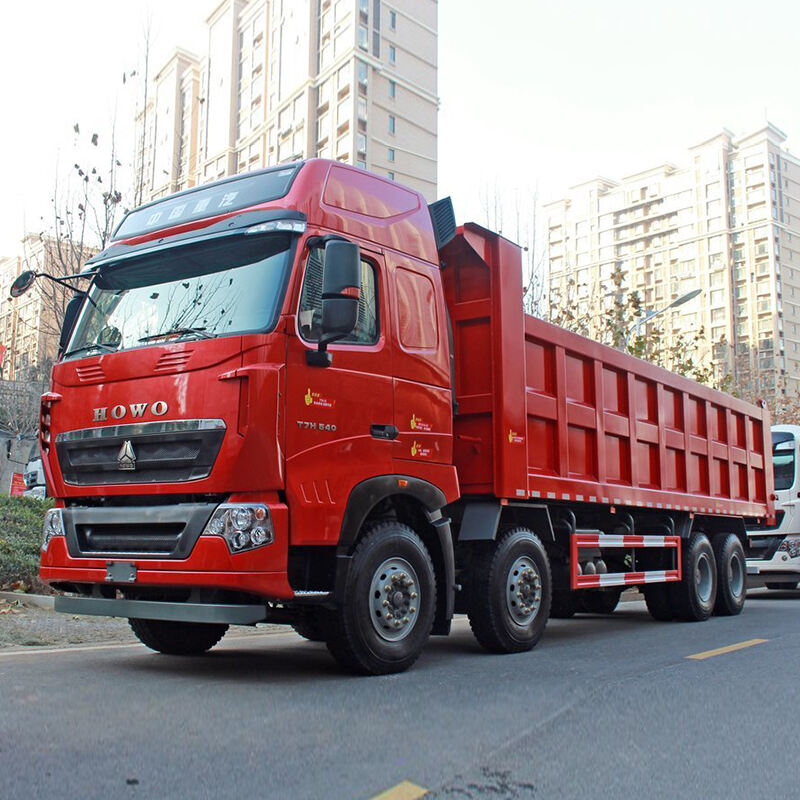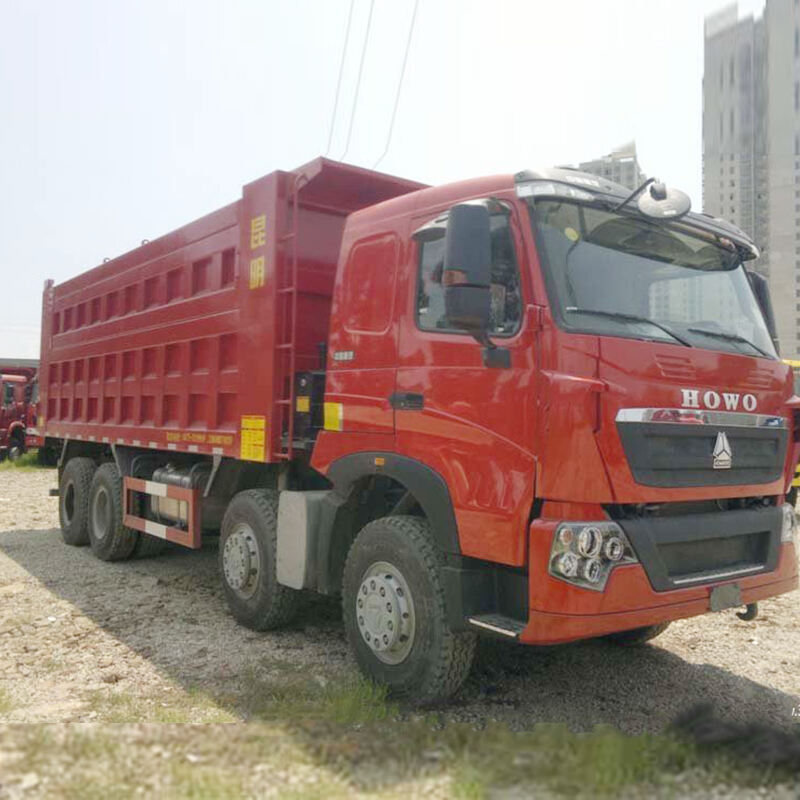24-D10, Building 3, Aosheng Building, Shunhua Road Street, Jinan, Shandong, China +86 13953140536 [email protected]
How much stuff a truck can carry really matters for anyone running a logistics business these days. When trucks are packed efficiently, they move more products each trip which means fewer runs between warehouses and customers. This makes all the difference in bottom line numbers for companies that rely heavily on timely deliveries. Most fleet managers know this already when shopping for new trucks. A good rule of thumb is looking at vehicles that offer around 20% more space than what seems necessary at first glance. Extra room pays off fast when unexpected orders come in or seasonal demand spikes unexpectedly.
How a cargo truck is designed matters a lot when it comes to how much fuel it burns. Things like what kind of engine they put in there and how the weight sits across the frame really affect how well the vehicle performs overall. When manufacturers decide between putting in a diesel motor, going hybrid, or making an all-electric model, they're basically choosing between different levels of pollution output and running expenses. That shapes their whole approach to building these big rigs. Getting the weight right across the chassis cuts down on air resistance and actually saves money at the pump, which makes business sense too. Truck makers keep coming up with new ideas around these basic elements because nobody wants to sacrifice hauling power just to save gas. After all, companies need vehicles that can carry heavy loads while still being somewhat economical to run day after day.
The way air moves around cargo trucks makes all the difference when it comes to how much fuel they burn. Research from transportation experts indicates that making trucks more aerodynamic can cut fuel costs by around 10%. Take the Kenworth SuperTruck 2 project as an example. This prototype actually improved freight efficiency by over 130% compared to standard models, thanks largely to its redesigned shape. What do these changes look like? Think sloping sides instead of boxy corners and covered wheels rather than exposed axles. All these tweaks create less wind resistance so the truck doesn't fight against itself while driving down highways. For companies running fleets across country, this kind of improvement translates directly into real money saved on diesel bills during those endless cross-country trips.
Choosing the right materials matters a lot when building cargo trucks, because nobody wants to sacrifice safety just to squeeze in extra cargo space. Truck manufacturers commonly turn to lightweight options such as aluminum and special grades of steel for different parts of the vehicle. The idea is simple enough really these lighter materials cut down on overall weight which means more room for actual cargo instead of dead weight. Take the SuperTruck 2 project for instance. By going all out with lighter construction techniques, engineers managed to shave off around 7,000 pounds compared to regular trucks. That kind of weight savings translates into better gas mileage too, plus obviously more goods per trip. Most importantly though, there's still plenty of strength built into these designs so they hold up under tough conditions and protect drivers during unexpected situations on the road.
Getting the most out of payload capacity really matters when it comes to making cargo transport more efficient. A bunch of different things affect how much weight a truck can safely haul at once. Think about the size of the vehicle itself, what kind of materials go into building it, plus any clever engineering tricks they might have added. Lightweight parts make all the difference here. Trucks built with lighter materials can actually carry heavier loads while still staying within those strict weight regulations. According to recent studies in the field, newer models that incorporate stuff like aluminum frames and carbon fiber components tend to handle heavier weights better than older ones did back in the day, and they stay just as safe too. Most freight companies these days are always on the lookout for ways to squeeze extra capacity from their fleets because every bit counts when trying to cut down on fuel expenses and boost operational performance across the board.
Getting cargo from point A to B without issues starts with good payload management practices. How we distribute weight and optimize what goes where makes all the difference for successful transport operations. When loads are spread out properly, vehicles stay balanced which means less strain on components and better gas mileage since everything isn't pulling unevenly. The trick is putting heavier stuff near the middle of the truck bed while lighter items go toward the sides this gives drivers better handling and keeps accidents at bay during those long hauls. Most fleet managers know these basics already but implementing them consistently remains challenging. Companies that master these fundamentals typically see safer deliveries and lower costs over time, making it worth the extra planning effort required.
New tech is changing how cargo trucks are built, mainly because everyone wants better fuel economy these days. We're seeing things like hybrid engines pop up more often alongside smarter transmission systems that work differently than what we used to see. The numbers tell us there's real improvement happening here too. Fleet managers are saving money on gas costs while also doing something good for the planet. Take a look at recent findings showing that modern trucks with those hybrid setups can actually get around 10 percent more miles per gallon than regular diesel models. That kind of difference adds up fast for companies looking to save cash and reduce their carbon footprint at the same time.
Modern cargo trucks come loaded with smart tech这些东西 like telematics and what's called ADAS systems to boost how well they perform day to day. Telematics basically gives fleet managers instant info about where their trucks are, how much fuel they're burning, and when maintenance might be needed. Meanwhile, those ADAS features we hear so much about these days include things like adaptive cruise control that automatically adjusts speed, plus lane keeping assistance that helps drivers stay put in their lanes. When all this tech works together, it makes operations run smoother, keeps everyone safer on highways across the country, and builds trust with customers who need reliable deliveries week after week in this fast paced logistics world.
Adding these new tech features to cargo trucks helps solve today's problems while paving the way for what comes next in trucking innovation. The industry keeps changing fast, so getting smart systems installed on vehicles isn't just nice to have anymore it's becoming essential if companies want to keep running efficiently without cutting corners on safety. With pressure mounting from all sides to find greener ways to move goods around, those who adopt these technologies early will likely stay ahead of the curve when it comes to meeting environmental regulations and customer expectations alike.
Sustainability has become a big deal in cargo truck design lately, with manufacturers really stepping up their game when it comes to using recycled materials and greener production methods. According to recent studies, companies are making these changes because customers want eco-friendly options and governments keep raising the bar on emission standards. Take a look at modern trucks today – many builders incorporate recycled aluminum and steel into frames and body parts. This switch cuts down on carbon emissions quite a bit without compromising the strength needed for heavy duty hauling across long distances.
The rise of electric cargo trucks marks a major shift in the industry, driven largely by breakthroughs in battery tech. According to recent market analysis, we're seeing some pretty impressive gains lately. Battery packs are getting bigger while charging sessions are shrinking, something that makes these electric rigs actually practical for those long distance hauls across country. What this means for the future? Well, it looks like electric trucks could completely change how goods move around the nation. Less reliance on diesel fuel plus lower running expenses per mile makes them attractive options for fleet operators. And things aren't slowing down either. Manufacturers are already working on next generation batteries that promise even greater range capabilities and charge speeds that will put gas stations out of business sooner than many expect.
The HOWO T7H 8.5 meter Dump Truck packs serious capacity and gets the job done efficiently. What really sets this model apart is its Sinotruk MC13.54-50 engine that cranks out 540 horsepower straight from the factory. This gives the truck plenty of punch when tackling those tough hauling jobs on construction sites. Speaking of hauling, the vehicle comes equipped with an impressive 8.5 meter long cargo box in the traditional rear dump configuration. Workers can load up a substantial amount of material at once, which saves time between trips. Because of these specs, many contractors find this particular model works exceptionally well for city building projects and transporting materials across local roads where bigger trucks might struggle.

The HOWO T7H 7.3m Dump Truck packs serious punch under the hood with its Sinotruk MC11.39-30 engine delivering solid 390 hp on demand. While not as big as some competitors, the 7.3 meter cargo bed gives operators real advantages when working in tight city spaces where bigger trucks just cant turn around. Many fleet managers actually prefer this setup because it strikes that sweet spot between carrying enough material without sacrificing too much mobility during regular workdays across construction sites and industrial parks.

Another model, the HOWO T7H 8.5m Dump Truck, differentiates itself with specific components enhancing its design. This version integrates a Sinotruk MC13.48-50 engine, offering 480 horsepower for substantial hauling capabilities. Its innovative design features accommodate various transportation needs, ensuring efficiency and reliability in demanding environments.

Cargo truck design is changing fast thanks to new tech stuff like automation and artificial intelligence getting built into vehicles. People who know the industry say these changes will really change how efficient and safe transporting goods can be. We're seeing more trucks come equipped with things like ADAS systems that help drivers stay alert and focused on the road. These kinds of features are making their way into more fleets all across the country, which means we might see completely self-driving trucks on highways sooner than many think. A recent report from Transport Topics suggests that when companies adopt automated systems, they tend to save money because routes get optimized automatically and there's less chance of mistakes happening behind the wheel.
Looking ahead at future cargo trucks, there are quite a few things worth thinking about, especially when it comes to new rules and tech updates. Autonomous trucks are coming fast, so lawmakers have their work cut out for them dealing with safety issues, protecting personal data, and keeping systems secure from hackers. At the same time, companies want to get greener by installing cleaner tech options that cut down on carbon output, something governments around the world are pushing for through various environmental laws. Getting ready now means the trucking sector won't face so many headaches later when these changes roll out. Better planning helps everything run smoother in warehouses and distribution centers too, which makes sense for anyone who wants their goods delivered on time without harming the planet in the process.